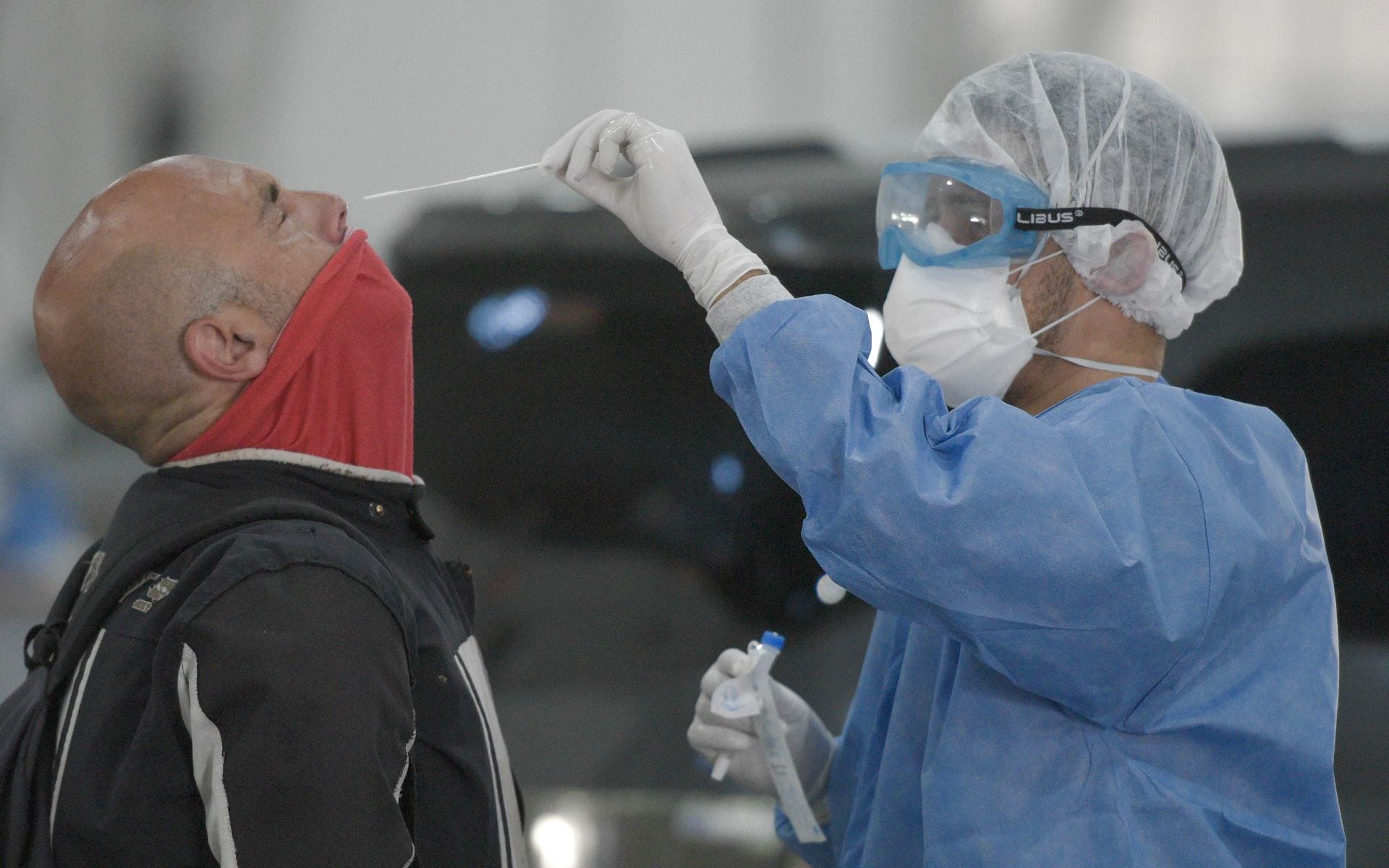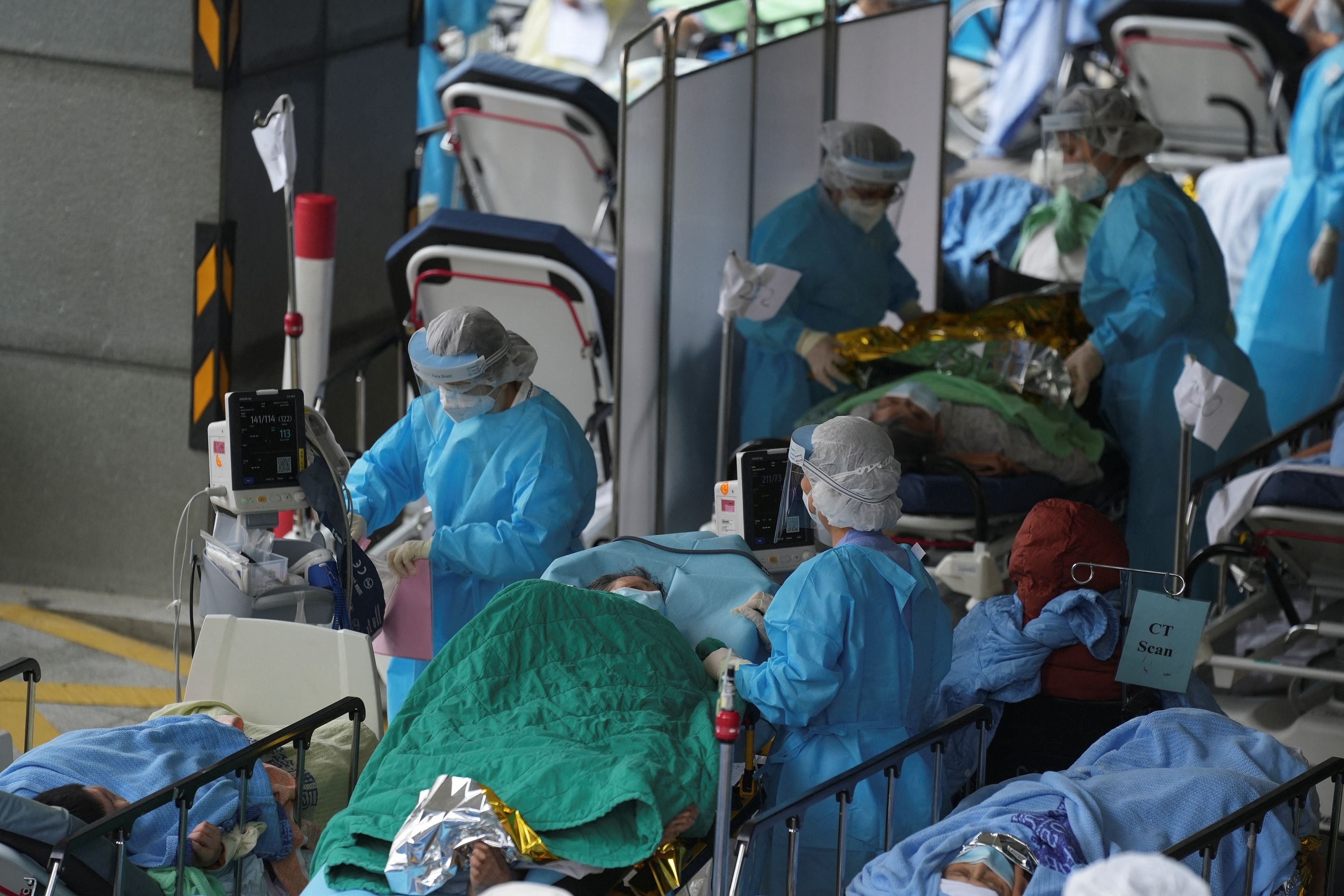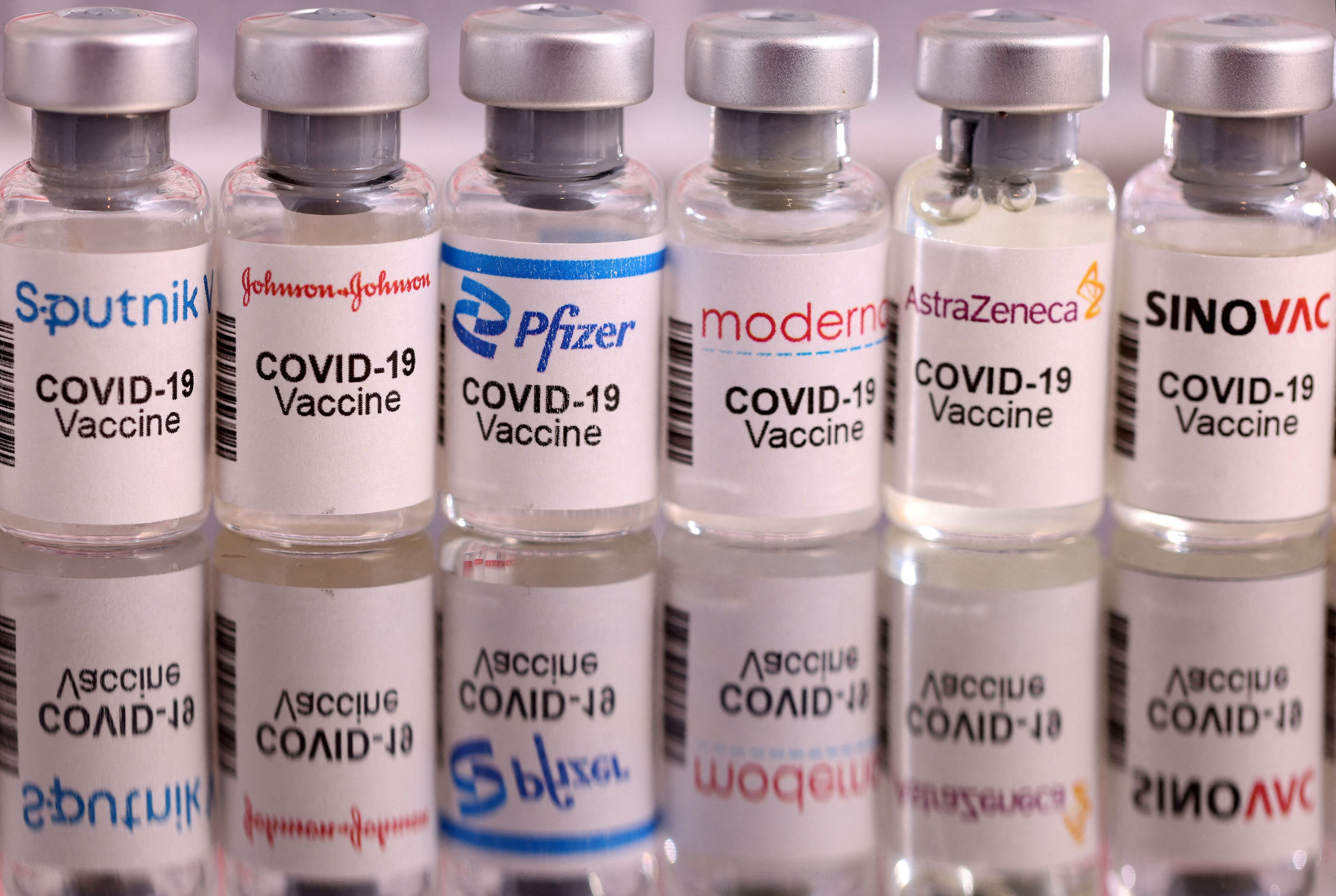
From the end of 2019 until now, more than 469 million people worldwide have acquired coronavirus infection. More than 6 million have died. The first year of the pandemic was strongly marked by massive confinements of cities and countries to delay the spread of the virus. Last year, however, the world focused more on the application of COVID-19 vaccines. In 2022, there are already different trends in the direction of the pandemic, including greater use of antiviral treatments that have been developed to counteract the infection.
Globally - in Western European countries such as France, the United Kingdom and Germany; and in Asia such as China, Hong Kong and South Korea, among others - the number of new cases is growing again, and experts in epidemiology and infectology are looking at the picture with concern. They emphasize that the pandemic is not over yet and that care is necessary to avoid another new wave. The Ómicron variant of the coronavirus - which is the most transmissible of all - continues to circulate in the third year with a pandemic.
Ómicron was detected in November last year and has been the fastest spreading variant of the coronavirus on the planet. It produced an explosive wave between the end of 2020 and the beginning of 2021, then it seemed to start to recede. However, the sublinage of Ómicron BA.2 struck another blow and cases rose again in several countries. In Latin America, there are also fears about the likelihood that another wave will occur again. In the third year with a pandemic, humanity still has 7 unknowns to solve:

1 - How to continue recording cases of COVID-19
In Spain, they are already working at a time of transition that would mean treating COVID-19 as has been done with the flu, even if they are different viral diseases. Every year, the health authorities do not record all cases of people with the flu, but rather sentinel surveillance is carried out.
The new sentinel surveillance system for COVID-19 is in the final stage of preparation between those responsible for the Coordination of Health Alerts and Emergencies, those responsible for the Alerts Presentation, which includes technicians from the autonomous communities; and those of the National Centre for Epidemiology (CNE). A group of primary school physicians or health centers will be chosen that will be combined with hospitals, in a strategic manner, to function as a witness. In this way, a statistically significant sample will be created and divided into key points. That is, instead of making an exhaustive count of confirmed cases of COVID-19, extrapolations would be made about the circulation of the virus.
In Argentina, the Federal Health Council (COFESA), which brings together all the country's health authorities, agreed that “due to high vaccination coverage, with a great impact on serious illness and mortality, since August 2020 (Decree 494/2021), the use of intensive care beds and tension in the health system rather than the incidence of cases. In this regard, it is agreed to implement changes in the methodology of data dissemination, moving to weekly reports.” Cases of COVID-19 will be reported on a weekly basis and not daily.

2- The challenge of reducing deaths
Vaccination against COVID-19 began in December 2020 in the West. At present, 66% of humanity has already received the first dose. 59% completed the primary schedule, and 19% received a dose as an additional or as a booster. Access to vaccination contributed to fewer deaths in the waves of the pandemic. Because vaccines were developed to prevent complications and mortality primarily.
With Ómicron, the likelihood that people already vaccinated will still be infected with the virus increased. But high protection has been maintained to prevent hospitalizations and deaths. In the case of Spain, 72,085 people died with COVID-19 during the first year. During the second, with the vaccine already widespread among the population, the deaths were around 29,000: the immunization campaign decreased deaths from coronavirus by about 60%.
On whether this third year of the pandemic can repeat the milestone of registering 0 deaths in one day - which has not happened since June 18, 2020, when the state of alarm declined -, experts have doubts. “It will depend on whether when the good weather arrives, in mid-June, the incidence drops and serious patients do not have any problems,” said Stanislao Nistal, virologist and professor of Microbiology at CEU-San Pablo University. According to Marcos López Hoyos, president of the Spanish Society of Immunology, levels of neutralizing antibodies due to infection or vaccination are being lost. “We are protected against disease and other components, but not against infection,” he said.
Faced with what may happen this year, experts take into account previous pandemics and consider that the stage at which an infection can be considered endemic does not mean that there will be no deaths. “In 1918, a flu pandemic began that ended up killing more people than the First World War. This is the example of pandemics, as serious as they can be. But over time, it ended up becoming the seasonal flu that appears every year. When a virus spreads through society, we protect ourselves with vaccines and exposure. Subsequent waves may be less severe, which can lead to a stable endemic disease,” William Hanage, epidemiologist and associate professor at Harvard's TH Chan School of Public Health, said in dialogue with The Harvard Gazette.
For the specialist, “to say that a disease is' endemic 'is just to say something about whether or not there are major epidemics, large outbreaks. It doesn't mean that a disease is harmless, because you can have an endemic disease that continues all the time and that kills a lot of people.” As examples, Hanage noted: “Tuberculosis is endemic in much of the world and kills millions of people. Malaria is an equally deadly killer, and yet it is considered endemic.”

3- Antivirals against coronavirus are now available
Drugs have been developed against the virus. Several treatments are available in Europe authorized by the European Medicines Agency (EMA). In the case of molnupiravir, its use is recommended by the European regulator's Committee for Medicinal Products for Human Use.
The drug remdesivir is prescribed in hospitals; and the rest do not finish arriving. “If they are proven effective and manage to contain very serious cases quickly, we will have another very significant advance against the virus. They would be a hitherto non-existent alternative for those who cannot be protected by the vaccine,” Dr. Nistal explained to the ABC newspaper. In addition, they will also be key to the risk of suffering persistent Covid, which affects around 10% of the population.
One of the drugs for COVID-19, Paxlovid from Pfizer, could be an important tool in the fight against COVID-19, after it reduced hospitalizations in high-risk patients by around 90% in a clinical trial. The results were significantly better than those of the MSD antiviral pill molnupiravir in his clinical trial. Paxlovid is a two-drug treatment that combines a new compound, nirmatrelvir, with the antiviral ritonavir. Both pills should be taken for five days shortly after the first symptoms of COVID occur.
Pfizer has already reached an agreement with the UN-backed Drug Patent Fund (MPP) to allow more than 30 generic drug manufacturers to make cheaper versions in 95 countries, although none are expected to be available before the beginning of 2023.
From Mexico, scientist Susana López Charretón, a researcher in virology at the Institute of Biotechnology of the National Autonomous University of Mexico, told Infobae: “I agree that this year there will be more attention on antivirals against COVID-19. What must also be taken into account is that we will not be sure until we are all safe, and by that I mean that we must emphasize that there is an equitable distribution of vaccines in the world and that children are allowed to be vaccinated in more countries, that they are still at risk and it is very important to protect them.”
4- Vaccination should be available to all mankind.
11.01 billion doses have been administered worldwide, and 16.24 million doses are administered every day. But there is a huge gap in access: Only 14.4% of people in low-income countries have received at least one dose. That is why, beyond the fact that antivirals are developed, there are also specialists who point to the problem of lack of equity.
“Until a significant proportion of the world's population is vaccinated, which is in Africa, Asia, and what is lacking in Latin America, we cannot stop thinking about vaccines as the main axis of the response to the pandemic,” Dr. Santiago Hasdeu, from the Argentine Network for the Evaluation of Health Technology (RedArets) “To say that this year will be that of antivirals seems more like an expression of desire for the pharmaceutical industry than from a healthcare perspective,” he added.

5- More booster doses
Over time, vaccine protection may decrease. In developed countries, the possibility of giving the fourth dose en masse is already being evaluated. But there are also doubts about its benefit. Almost a month after Sheba Medical Center launched a landmark study to test the effectiveness of a fourth vaccine against COVID-19, the hospital revealed that the booster was only partially effective in protecting against infection with the Omicron variant.
A fourth injection of the COVID-19 vaccine increases antibodies to even higher levels than the third shot, but it is not enough to prevent Omicron infections, according to the preliminary study. The Spanish Society of Immunology considered that it is not in favour of inoculating a fourth dose because it applies the same type of vaccine, made on the basis of the original variant of Wuhan, in China. We should look for “others that include some of the mutations that appeared, such as Omicron or, combined”.
For Laith Abu-Raddad, an epidemiologist specializing in infectious diseases at Weill Cornell Medicine-Qatar in Doha, who demonstrated that messenger RNA vaccines against COVID-19 prevent many of the worst cases, even in response to the BA.2 sublineage, we have to think about vaccines for different variants.
“In reality, vaccines are working extraordinarily well, considering the challenges of evolution,” he said in dialogue with the journal Nature. But he estimated that vaccines against single variants should be stopped and move to the development of pan-coronavirus vaccines, that is, inoculants that protect against different species of coronavirus. “This would be a more fundamental solution for the future,” he said.

6- Other vaccines are on the way
Vaccines usually require years of research and testing before they arrive at the clinic, but in 2020 scientists embarked on a race to produce safe and effective coronavirus vaccines in record time. Researchers are currently testing 119 vaccines in human clinical trials, and 49 have reached the final stages of testing. More than 75 preclinical vaccines are being actively investigated in animals. The arrival of different types of coronavirus vaccines on the market could change the landscape.
Argentina is very well positioned in the international scientific concert with the 7 vaccines project women candidates in development. Many of them could start their clinical trials before the end of the year. Some projects are more advanced than others, and most are supported by the State, through funding from the Coronavirus Unit, composed of the Ministry of Science, Technology and Innovation, Conicet and the National Agency for the Promotion of Research, Technological Development and Innovation (R&D&I Agency).
7- The risk of other variants of concern
The coronavirus has not stopped evolving. He's suffering mutations Some of them are part of variants of concern, such as Alpha, Beta, Delta, and Ómicron. The emergence of new variants depends on several factors such as the percentage of people without vaccines, and adherence to prevention measures, among others.
For Andrea Ammon, director of the European Centre for Disease Prevention and Control (ECDC) and Maria Van Kerkhove, from the World Health Organization (WHO), Ómicron will not be the last variant. The experts also said that “it is not certain that the SARS-CoV-2 coronavirus continues to mutate into milder variants that make people less sick than the previous variants”.
“While there are large pockets of virus replication in countries where vaccination has been scarce, the possibility of emerging new variants of the coronavirus that may be more transmissible or more severe remains latent,” scientist López Charretón warned in the dialogue with Infobae.
I KEPT READING:
Últimas Noticias
Debanhi Escobar: they secured the motel where she was found lifeless in a cistern

The oldest person in the world died at the age of 119

Macabre find in CDMX: they left a body bagged and tied in a taxi
The eagles of America will face Manchester City in a duel of legends. Here are the details

Why is it good to bring dogs out to know the world when they are puppies




